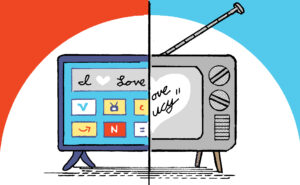A data orchestration strategy isn’t the sort of thing you can just pull out of a hat – a fact that sports cap and apparel brand Lids knows firsthand.
“For a long time, that was one of our biggest challenges as an omnichannel retailer: We had no centralized place for all of our customer information,” said Wendy Mudis, the company’s VP of marketing.
While Lids has an ecommerce site, most of its sales come from its more than 1,000 brick and mortar locations across the United States and Canada, and sales have been declining. Lids Sports Group’s recently former parent company, Genesco, which completed a divestiture of the struggling hat-ware brand last week, reported a 4.5% decline in sales at the end of 2018.
Part of the problem was that to derive actionable insights from its online database combined with the data coming from its point-of-sale system was both a clunky and time-consuming process.
“We weren’t able to dedupe records or create that one customer file with a comprehensive view,” Mudis said. “It was also extremely cumbersome for us to find things out about our customers.”
In November 2018, Lids starting working with AgilOne as its customer data platform to try and de-silo and make better use of its data sources.
AdExchanger caught up with Mudis to see how its data integration project is going.
AdExchanger: Why do retailers struggle with omnichannel?
WENDY MUDIS: If someone buys something online, it’s much easier to get their information. People obviously need to share info to have their purchases shipped – and it’s a one-to-one relationship. But in the brick and mortar space, someone could make their purchase in cash and you’re never able to associate that transaction with any specific customer. You don’t really get to understand a big chunk of your in-store transactions, so you can’t market to them.
How are you getting around that?
We have a loyalty program that helps us gather than information. Users give an email address to become a member and if that email address gets entered when they’re in the store, we can tie it to an individual and our CDP can combine it with online activity to make one holistic customer record. We’re continually trying to learn more about the behavior of our customers in-store so we can use that information to do smarter marketing.
What’s an example of smarter marketing?
There’s a cutoff at which point you can no longer order online if you want to get something in time for the holidays. That’s when we used to switch our messaging to push people into a store.
But what we found is that just blasting everybody with in-store shopping-related emails led to an increase in unsubscribes.
One of the first things we did with our CDP – and this really made an impact – was to identify customers who shop exclusively online, customers who shop exclusively in store and those who shop both ways. We were able to segment out the people who shop in our stores to send them the in-store message while leaving out the people who only shop online and have no interest in going to the store. That helped us push positive traffic to the store without increasing our unsubscribe rate.
I know it’s early, but are there any results that you could share in terms of how the CDP deployment is going?
Because we are able to segment in-store only customers, online-only customers, and omnichannel customers, we have seen better engagement and lower opt-outs with our emails as we target our messaging to each of those audiences.
What’s on your CDP road map?
We want to get much quicker with our turnaround time and we want to push our messages to multiple channels, not just email.
We also want to get smarter about cross-selling. For example, a lot of people buy MLB products, but would they also be interested in buying MiLB products to support the minor league baseball team that’s feeding their favorite major league team?
The ultimate and more long-term goal is to get as one-to-one with our personalized messaging as we can get, including personalizing the website. If we know someone is a Bears fan when they come to the website, that is what they should see.
Who owns the CDP within Lids, marketing or IT?
Marketing owns the CDP, although there are a lot of interested parties at the company who want to see the customer insights. That’s why we’re creating a new role in our department focused on marketing data and insights. The vision is for this person to be the go-to for anyone in the company who’s looking for customer data. We’re trying to avoid a dozen different people from all over the company pulling reports, because if that’s not done with consistency, everyone ends up looking at different data.
Customer data platforms aren’t new, but there’s been a lot of buzz around the CDP space for the last year or so and a lot of new entrants. Does the CDP landscape feel confusing?
A lot of the functionality you see in a CDP seems to already exist in a CRM system. To me, it just feels like an evolution of CRM and pushing insights into a tool that makes customer marketing easier.
This interview has been condensed and edited.














